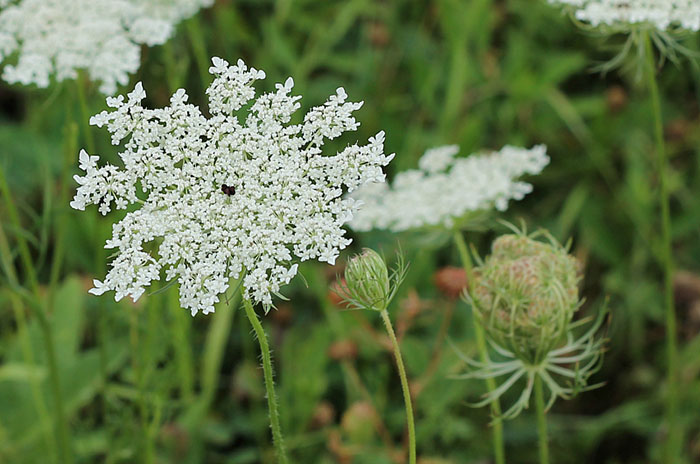Queen Anne’s Lace Flower Symbolism Facts & Meaning: Zodiac, Superstitions, Dreams, and Legends
I
Queen Anne’s Lace Flower Facts
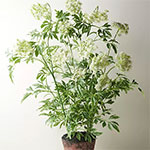
It is true that some of the wonderful things are found in the most unexpected places —like the Queen Anne’s Lace Flower. Also known as the Daucus carota, this wildflower identified by its flat-topped cluster of delicate white flowers and fern-like leaves, can be found in dry fields, roadside ditches, and open areas.
While the pure whiteness of this flower gives the impression that it smells fancy, it actually releases a carrot odor when the leaves and stems are crushed. Because of this, it is also frequently called a wild carrot.
In fact, our famous carrot is derived from Queen Anne’s Lace. Even in this day and age, they can still cross-pollinate. Carrot seeds have a greater chance of developing into Queen Anne’s Lace if they are combined with Queen Anne’s Lace Flowers. So instead of growing carrots in your backyard, you’ll be astonished to see clusters of this white wildflower instead.
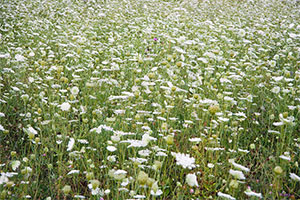
II
Queen Anne’s Lace Flower Uses
In addition to being an aesthete, the roots of this flower act as a diuretic to help prevent and get rid of kidney stones. Any substance that encourages the increased production of urine is a diuretic. Traditionally, drinking tea produced from the roots of Queen Anne’s Lace is said to have diuretic properties.
This wildflower’s seeds have been used as a contraceptive for centuries. It was a medication that doctors recommended to help with abortions (backed by researchers from China). But on the lighter side of its uses, the seeds are also utilized as a hangover cure.
You can also find the plant made into a tincture, cordial, and even a jelly. While this flower isn’t available at a drugstore, you may find it on your way to a party along the road!
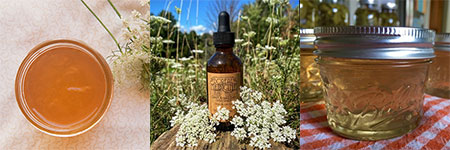
III
Queen Anne’s Lace Flower History
Like most flowers, Queen Anne’s Lace comes with different stories associated to it. One story believes that the flower refers to Queen Anne II who died at a young age of 49, from 1665-1714. Out of her 18 pregnancies, only one of her children survived. This is how the flower came to be connected to child loss.
According to a different version, Queen Anne II was a well-known craftsperson who was particularly skilled at making lace. She inadvertently poked her finger with the needle while tatting white lace, resulting in a drop of blood falling at the lace’s center. Because of this, it is thought that the center of these pure white wildflowers has a cluster of dark red blossoms.
Putting aside the legends that surround this elegantly suitable wildflower, you can see Queen Anne’s Lace in full bloom from the spring of May to the fall of October throughout the United States. However, it is believed to have originated in central Asia, specifically in Afghanistan and the surrounding areas, and continued to spread in Mediterranean Europe before the Christian Era which was approximately 2013 years ago. It was already regarded as a medicinal herb when it was introduced in North America.
IV
Queen Anne’s Lace Flower Positive Symbolism
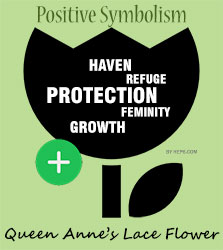
A cluster of delicate and tiny white flowers sitting somewhere in your living room or garden can already create an atmosphere of a magical sanctuary — which is also one of the positive symbolisms associated with Queen Anne’s Lace.
Sometimes referred to as the bishop’s flower, this pristine wildflower is highly associated with femininity, protection, growth, refuge, and haven as well.
V
Queen Anne’s Lace Flower Negative Symbolism
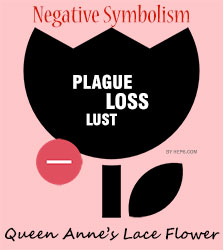
While Queen Anne’s Lace is mostly associated with positive concepts, it also has a negative connotation. One symbolism came from the story of how Queen Anne II only survived one pregnancy out of 18. This then became associated with the loss of children.
A wildflower as elegant as Queen Anne’s Lace is also associated with lust. Some people even referred to it as the devil’s plague because of the belief that bringing home a wildflower would bring death to one’s mother.
VI
Queen Anne’s Lace Flower Cultural Symbolism
Queen Anne’s Lace has been widely naturalized in Europe since the Victorian era because it is connected to Queen Anne II. It was believed to be a pure wildflower that stands for growth and purity. In some cultures, the pure white wildflower is a representation of cleanliness, healing, innocence, and a fresh start. However, because it holds the name of a queen, it also culturally represents royalty.
Some Queen Anne’s Lace has a darker center, associating the pinkish color with youth, festivities, love, and sweetness. This is due to the story told about her creating a beautiful lace as a challenge, and accidentally pricking her finger in the process.
The final month of spring is also supposed to have been a favorite trip month for Queen Anne II. Because Queen Anne’s Lace typically starts blooming in late May, many believed that it has been decorated in honor of her when the wildflowers start showing up along the sides of the road.
VII
Queen Anne’s Lace Flower Zodiac Sign

In western astrology, the zodiac sign is an essential part of who you are — your luck, fate, personality traits, compatibilities, and even the choices you make in life are somewhat based on the alignment of the stars when you were born. Even special flowers have been designated for each sign of the zodiac.
Cancer is the astrological sign that closely represents white flowers. Those who are born under this sign are also born under the influence of the moon, which is why the color white reflects the moon’s purity and brightness. If you have any personal experience with a Cancer, you are aware of their reputation for being sensitive and intuitive, reflecting the purity of a Queen Anne’s Lace.
VIII
Queen Anne’s Lace Flower in Dreams
A queen never tells a secret — and this is what you should remember when you dream of Queen Anne’s Lace. When this pristine wildflower shows up in your dream, it is suggesting that you will soon hear about confidential information that involves you. It is a reminder to be prepared for future implications should you gossip about the private information shared with you. In short, keeping a secret instead of going around telling it to others is a very sophisticated and refined move.
IX
Queen Anne’s Lace Flower Omens and Superstitions
It is rather unfortunate to think that a seemingly innocent flower has its share of unfavorable connotations with superstitions. In some parts of New England, Queen Anne’s Lace is considered a weed — a wild plant that grows where it is not wanted. And it is definitely not wanted in most homes because it is thought that picking the wildflower and bringing it home results in the death of one’s mother. It is even coined as “the step-mother blessing”.
X
Queen Anne’s Lace Flower Mythology and Folklore
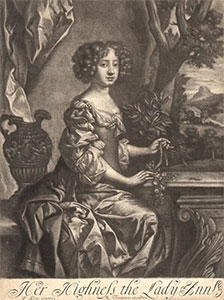
Few references to Queen Anne’s Lace Flower may be found in Greek and Roman myths. However, there are many urban legends surrounding it, ranging from Queen Anne II’s failed pregnancies and the flower’s association with the death of mothers and the loss of children to Queen Anne II creating a beautiful lace as challenged by her friends and accidentally drawing a drop of blood at the center of the lace, associating its whiteness with purity and its pinkish hue with youth and celebrations.

